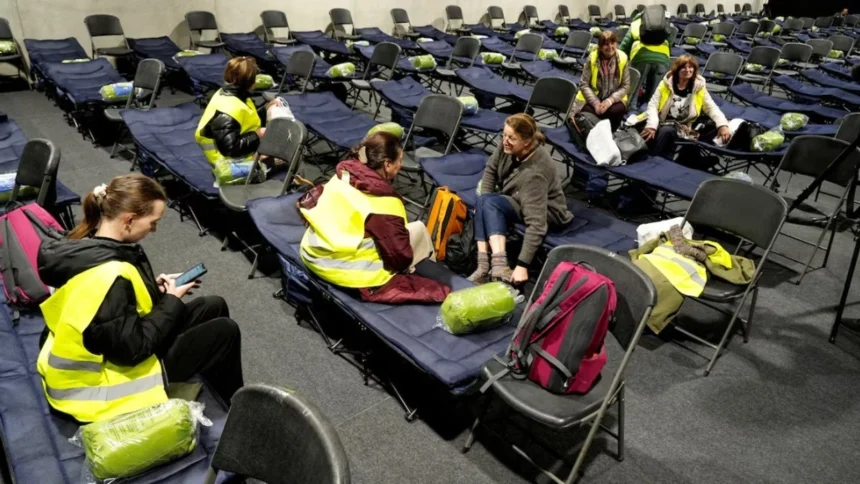Alarmed by Russia’s massive military spending since its invasion of Ukraine in 2022, the three Baltic states are drafting emergency plans to deal with the potential displacement of hundreds of thousands of people in the event of a troop buildup or a direct attack.
Estonia, Latvia, and Lithuania have long expressed fears of possible Russian aggression, citing cyberattacks, disinformation campaigns, and recent airspace incursions by Russian fighter jets and drones.
Russia, however, maintains that it has no plans to attack NATO.
Prepared for the Worst
The three countries — annexed by Moscow during World War II — have doubled their defense spending since Russia’s full-scale invasion of Ukraine, despite Moscow’s repeated denials of offensive intentions.
“Threats can change,” said Renatas Pozela, Lithuania’s fire and rescue chief, who is involved in emergency planning. Coordination among the three nations has intensified since they agreed to cooperate on civil defense in May.
Possible Scenarios
According to Pozela, one scenario envisions “a powerful army massed along the Baltic borders, aiming to seize all three states within three days to a week.”
Other discussed threats include:
- Sabotage of communication or transport links
- A surge of migrants used as political pressure
- Civil unrest among Russian-speaking minorities
- Disinformation campaigns causing panic and mass flight
Exercises simulating small-scale evacuations — such as one in Vilnius involving only 100 people — are already taking place. However, officials told Reuters that classified emergency plans envision far greater movements.
Pozela said about 400,000 residents living within 40 km of the Russian or Belarusian borders are considered at potential risk.
In Kaunas, plans include sheltering 300,000 people in schools, universities, churches, and large arenas — including venues where artists like Robbie Williams and Roger Waters recently performed.
Mobilization and Logistics
Collection points have been designated in major cities such as Vilnius, with buses, trains, and supply warehouses (stocked with essentials like hygiene products and folding beds) ready for deployment.
Those evacuating by car would be diverted to secondary roads to keep main routes open for incoming NATO forces.
“This sends a reassuring message to our society — that we are prepared and actively planning,” said Lithuanian Foreign Minister Kęstutis Budrys.
Cross-Border Movement
Currently, none of the three Baltic states has concrete plans to relocate civilians beyond their national borders.
Their only land connection to the rest of NATO is through the Suwalki Gap — a narrow forest corridor in Poland between Russia’s Kaliningrad and Belarus. Experts warn that Russian forces could attempt to cut off this route in the event of conflict.
Estonia’s Ivar Mai, an advisor for mass evacuations, said the country is preparing to relocate one-tenth of its 1.4 million citizens to temporary shelters, while many others would likely stay with relatives.
In Narva, a predominantly Russian-speaking city of 50,000 residents, officials expect up to two-thirds may need evacuation, with government assistance planned for at least half of them.
“This is only for those who have nowhere else to go,” Mai explained.
Meanwhile, Latvia estimates that one-third of its 1.9 million citizens might be forced to leave their homes, according to Ivars Nakurts, deputy director of the national Fire and Rescue Service.
“You have to plan for everything,” Nakurts concluded.







